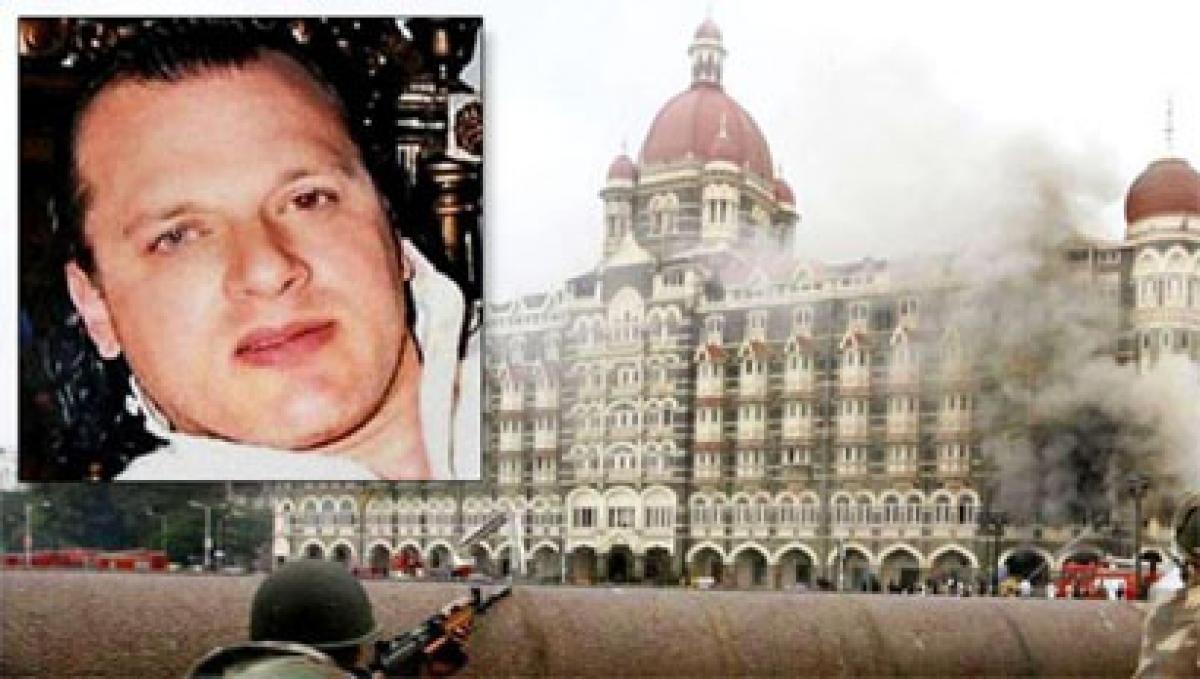Live
- 13th edition of ‘Hack AP Hackathon’ conducted
- Ayyappa devotees in thousands throng Yadagirigutta for Giri Pradakshina
- Former CM S M Krishna cremated with state honours
- Gali Janardhana Reddy announces gold-plating of Anjaneyaswamy Temple tower
- Private practitioner found operating from govt clinic
- PM stresses on thinking out-of-the-box in every sector
- Lokayukta cracks down, seizes illicit assets worth crores
- Farmers protest over delay in canal repair
- Amid continuing furore, five more maternal deaths occur in State
- Fostering a robust innovation
Just In

The controversial Ishrat Jahan shootout, which once sent current BJP president Amit Shah to jail for months, is back to cause ripples in India\'s political landscape after David Coleman Headley, a Pakistani-American Lashkar-e-Toiba (LeT) operative, on Thursday named her a member of the terror group.
The controversial Ishrat Jahan shootout, which once sent current BJP president Amit Shah to jail for months, is back to cause ripples in India's political landscape after David Coleman Headley, a Pakistani-American Lashkar-e-Toiba (LeT) operative, on Thursday named her a member of the terror group.
Controversy has shrouded the action on the June 15, 2004 by a police team led by DIG D.G. Vanjara, amid claims and counter-claims about its authenticity. At least two investigations -- one by a metropolitan magistrate and the other by a court ordered special investigation team -- indicated that the shootout was staged and Ishrat had no terror links. She was alleged to have been killed in cold-blood.
Shah, was then Gujarat's home minister. He had to resign in the aftermath of the case. He was jailed for a few months before being given bail and was asked to live outside Gujarat.
Jahan, a 19-year-old college student, and her three associates, Pranesh Pillai also known as Javed Gulam Sheikh, Amjad Ali Rana and Zeeshan Johar, were killed near Ahmedabad in an alleged shootout with the police.
The Ahmedabad police claimed that the slain persons were Lashkar's suicide bombers and were in the city to kill Narendra Modi, the then chief minister. The police also claimed that the suspected terrorists were plotting to avenge the 2002 Gujarat communal riots, in which hundreds of Muslims were killed.
Months later, on September 7, 2009, metropolitan magistrate S.P. Tamang submitted a report in an Ahmedabad court saying that the four had earlier been arrested and killed in police custody. Tamang picked holes in the police theory citing a forensic report that showed the suspected terrorists were shot from a very close distance and at different times of the day.
TamangÂ’s report said that there was no evidence to link them to the Lashkar militant group and nothing that indicated that they had planned to assassinate Modi. On the basis of TamangÂ’s findings, the Ahmedabad court ruled it to be a staged shootout.
The government challenged the decision in the high court, terming Tamang's report "illegal and doubtful" because, the government said, it didnÂ’t have the response of 20 policemen, including senior IPS officers, involved in the shooting.
The Gujarat high court tasked a Special Investigation Team to probe the case further. The probe panel submitted its report on November 21, 2011 that the shootout was staged. The high court ordered murder charges to be framed against those involved.
However, in June 2013, an Intelligence Bureau report which appeared in the media told the PMO and the home ministry that the agency had enough evidence to prove that Ishrat was part of an LeT module which planned to kill Modi.
In 2004, a Central Bureau of Investigation report also denied that Amit Shah had any role in the shootout.
HeadleyÂ’s earlier testimony before a team of National Investigation Agency (NIA) came in 2011 when he reportedly told Indian investigators who had gone to the US that Jahan was a Lashkar terrorist. And on Thursday he repeated the assertion via video from the US before a Mumbai court that she indeed worked for the terror group that operates from Pakistan.

© 2024 Hyderabad Media House Limited/The Hans India. All rights reserved. Powered by hocalwire.com







